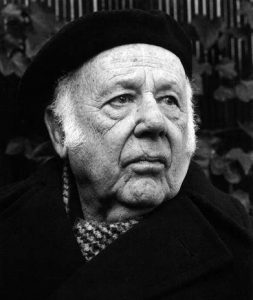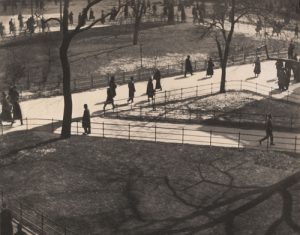Yasa Syed
IDC 1000H
10/17/2016
Professor Hoffman

PAUL STRAND
A Short Biography of Paul Strand:
Paul Strand was a photographer and filmmaker born in New York City on October 16, 1890. He mainly focused on modernist photography, and he was a key player in making photography an art form. Modernist photography refers to photography between 1910-1950, when there was the sharp focus, and the camera was used as a tool. Strand himself discovered the positives of a large-format camera, and this changed his approach to photography entirely. Prior to his experimentation and focus on modern photography, his photos had a soft-focus.
As a child, Strand studied under photographer Lewis Hine, an American sociologist and photographer. He met Hine at the Ethical Culture School, where he enrolled in 1907 to hone his interests in photography. A link between him and Strand is their use of photography for political purposes. Hine’s photos played an integral role in transforming child labor laws. In 1920, Strand began using his photography to promote progressive causes. Like his mentor, Hine, his photography was dedicated to changing labor conditions. Strand established Frontier Films to create documentaries about labor conditions as well. Interestingly enough, when Strand migrated to France in 1949, he was never officially part of the Communist Party, but he held connections with many prominent socialists and communists, such as Cesare Zavattini and Basil Davidson. A reason for his move was the fact that America grew increasingly conservative in the 1950s, a seeming reversion to 19th century ideals and a reversal of the progress made by women. Also, during this time, segregation was still a problem, because the Civil Rights Act was not signed until 1965. With this knowledge, it is no surprise that while in the United States, he established Photo League in New York in order to provide the socialist press with photography of political protests and trade unions.
Though known for his photography, Paul Strand was also a filmmaker. His first movie was Manhatta, which was released in 1921, a film which is applicable to our class because it is a film which shows life in New York City. He also worked on films such as Redes, The Plow That Broke the Plains, and Native Land.
Discussion of Paul Strand’s Works:
As mentioned earlier, Strand photographed children in factories in order to work towards reforming child labor laws like his mentor Lewis Hine. These are photos taken by Strand.
A Bit on Child Labor in the Early 1900s:
Upon the immigration of Irish, Southern, and Eastern European people, child workers were supplied to the ever expanding United States market. Many of these people saw no immorality in child labor. At least 18 percent of children from these countries were employed in 1900. Many efforts in the 1900s were made to regulate and eliminate child labor by organizations such as the National Child Labor Committee. At the time, the progressives had a different meaning from what they have today, in that their ultimate goal was to confront cruelties against children and minorities like this. Though there was an amendment passed in 1924 by Congress authorizing federal child labor legislation, it was not ratified in many states because of the pressure of the churches and conservatives in the country. This type of federal regulation was likely considered contrary to capitalistic, laissez-faire ideology, which is something conservatives in the country adhered to strictly. The use of children in the labor force was seen as an effective practice in the labor market. However, one of the gripes many activists had with this practice was the horrible working conditions of the factories in which these children worked.
After the Great Depression, however, child labor decreased because there was a push for adults in the labor force.
Strand’s NYC Photography:
Street Photo, Central Park
Sandwich Man, 1916
Wall Street
Relationship to Themes in This Course:
Paul Strand embodies five of the themes in this course: What is art and what is its purpose, Social Justice, Immigration, Morals and Norms, Meaningfulness. Many of these themes overlap with each other in that Paul Strand’s medium was photography, and its eventual higher purpose was to capture the conditions of child labor in New York City in order to work towards amending the conditions. This is an act of Social Justice. Strand himself was born to Bohemian parents, and the people he often photographed to capture child labor conditions were immigrants from Ireland, Southern, and Eastern Europe. The norm at the time was child labor, but Strand’s morality, along with others’ morality, caused them to work against it. Strand’s work has eternal meaning because of the way in which it helped progress efforts to end child labor. Furthermore, the photography of New York City done by him captures the essence of the City and allows to take a peek into the past.
Bibliography:
https://en.wikipedia.org/wiki/Paul_Strand
https://en.wikipedia.org/wiki/Lewis_Hine
http://lumieregallery.net/wp/197/paul-strand/
http://www.history.com/topics/child-labor
http://www.phillipscollection.org/research/american_art/bios/strand-bio.htm




Leave a Reply